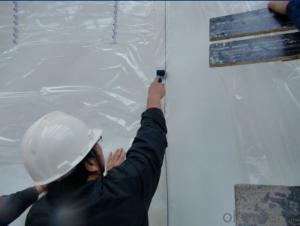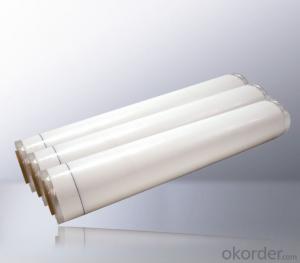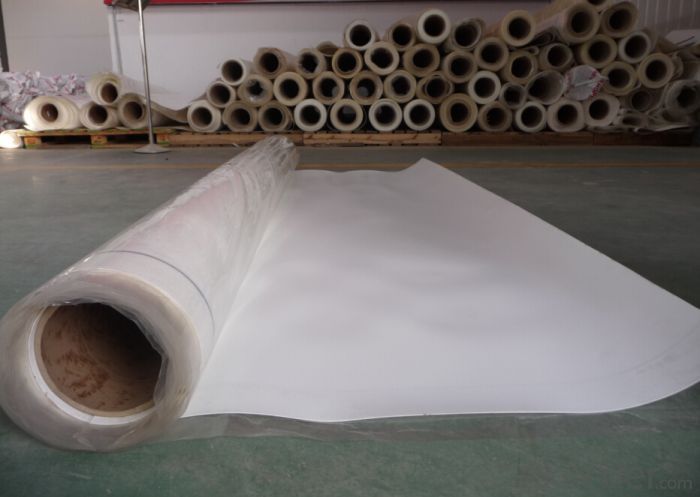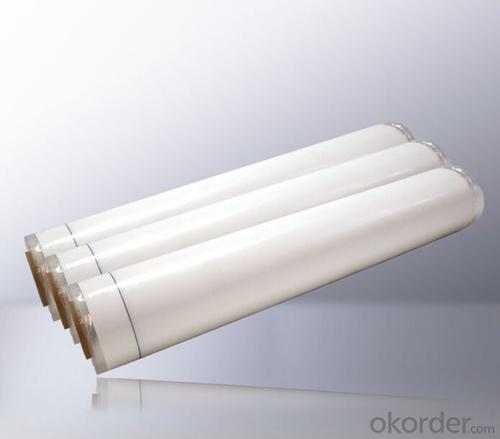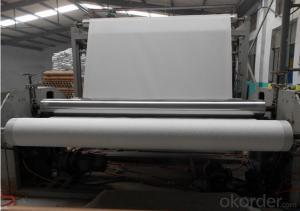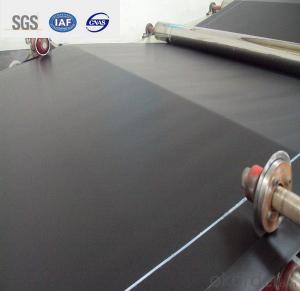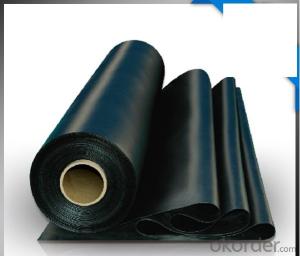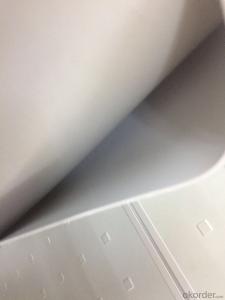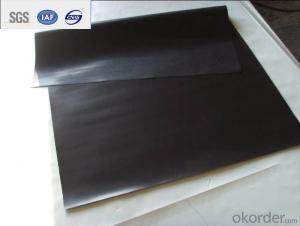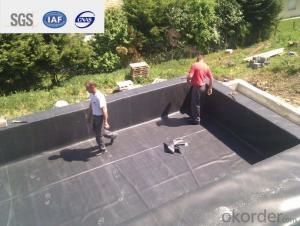HPDE Waterproof Roofing Membrane Thickness with 1.5 mm
- Loading Port:
- Qingdao
- Payment Terms:
- TT OR LC
- Min Order Qty:
- 5000 m²
- Supply Capability:
- 10000 m²/month
OKorder Service Pledge
OKorder Financial Service
You Might Also Like
Product Introduction:
HDPE Self-adhesive Waterproof Membrane is specially used in underground project, it can bond with concrete layer tightly. After Membrane bonding with concrete, water can be blocked between membrane and concrete, which can improve the reliability.
Product Applications:
Basement,Subway,Tunnel Cave, Other underground public constructions.
Product Advantages:
1. Good bonding with concrete applied on membrane, to block water between membrane and concrete further to protect concrete effectively.
2. Low flatness requirement to substrate, reliable overlapping; mechanical fixing, easy application.
3. Sound anti-puncture performance.
Product Features:
1. Adaptable to settlement and distortion.
2. Weather-resisting and anti-UV.
3. Resist to acid, alkali, mold.
4. Eco-friendly material.
FAQ:
Q: What kind of payment you could accept?
A: TT, LC, etc
Q: How many quantity in one 20'' container for 1.2mm and 1.5mm?
A: 480rolls, 11520m2 for 1.2mm and 400rolls, 9600m2 for 1.5mm
Q: Can you provide free samples?
A: Yes, our samples are free, but express fees usually on buyer's account.
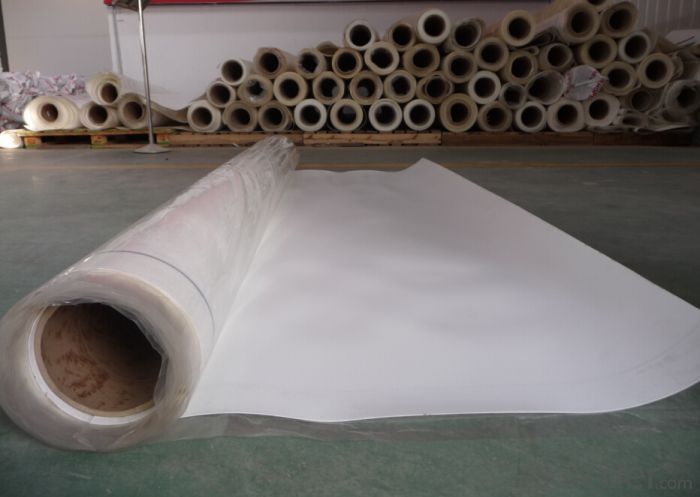


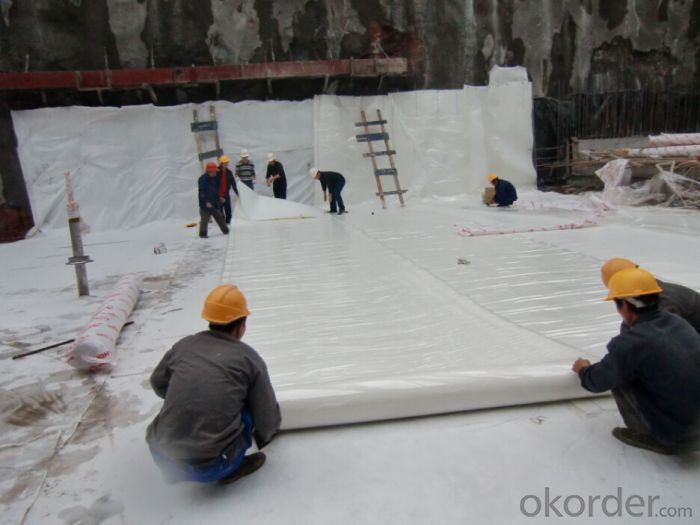
- Q: Can a waterproofing membrane be used on precast steel surfaces?
- Yes, a waterproofing membrane can be used on precast steel surfaces. The membrane is designed to provide a protective layer against water penetration, making it suitable for application on various surfaces, including precast steel. This can help prevent corrosion and prolong the lifespan of the steel structure.
- Q: Can a waterproofing membrane be applied to both interior and exterior surfaces?
- Both interior and exterior surfaces can benefit from the application of a waterproofing membrane. Its main objective is to safeguard against water infiltration and shield the underlying surfaces. Regardless of whether it is used indoors or outdoors, the membrane serves the same purpose of establishing a barrier against moisture. Basements and crawl spaces commonly utilize interior waterproofing membranes to prevent water from seeping into the building interior. On the other hand, exterior waterproofing membranes are typically applied to the outside walls and foundations to guard against water penetration from rain, groundwater, and other external sources. Both types of membranes are engineered to be long-lasting, adaptable, and water-resistant, ensuring the durability and structural soundness of the surfaces they are applied to.
- Q: Can a waterproofing membrane be used for a retaining wall?
- Yes, a waterproofing membrane can be used for a retaining wall. Retaining walls are typically used to hold back soil or other materials, and they are often subjected to moisture and water pressure. A waterproofing membrane can provide an effective barrier to prevent water from seeping through the retaining wall and causing damage. It can help to maintain the structural integrity of the wall and extend its lifespan. However, it is important to ensure that the waterproofing membrane chosen is suitable for the specific conditions and requirements of the retaining wall. Professional advice and proper installation techniques should be followed to ensure the effectiveness and longevity of the waterproofing membrane.
- Q: Does a waterproofing membrane prevent mold and mildew growth?
- Yes, a waterproofing membrane can help prevent mold and mildew growth. Mold and mildew thrive in damp and moist environments, and a waterproofing membrane helps to create a barrier that prevents water from seeping into the surfaces it is applied to. By keeping moisture out, it reduces the conditions that promote mold and mildew growth. However, it is important to note that while a waterproofing membrane can be effective in preventing mold and mildew, it does not guarantee complete protection. Proper ventilation and regular maintenance are also essential in preventing mold and mildew growth.
- Q: Are waterproofing membranes suitable for historical buildings?
- Yes, waterproofing membranes can be suitable for historical buildings. These membranes provide an effective solution for preventing water penetration and damage to the structure, helping to preserve the integrity and longevity of the building. However, it is essential to consider the specific requirements and characteristics of the historical building and select an appropriate membrane that is compatible with its materials and architectural features. Additionally, any waterproofing work should be done with sensitivity and care to ensure it does not compromise the historical value or aesthetics of the building.
- Q: Can a waterproofing membrane be used on metal block surfaces?
- Metal block surfaces can indeed benefit from the use of a waterproofing membrane. These membranes are specifically designed to form a barrier against water and moisture, and they are versatile enough to be applied to various types of surfaces, including metal. By adhering to the metal surface, the membrane creates a protective layer that not only prevents water infiltration but also safeguards the metal against rust and corrosion. However, it is crucial to guarantee that the metal surface is thoroughly cleaned, dried, and appropriately prepared before the application of the waterproofing membrane. This preparation ensures optimal adhesion and effectiveness. For specific instructions on using a waterproofing membrane on metal block surfaces, it is highly recommended to consult a professional or refer to the manufacturer's guidelines.
- Q: Are waterproofing membranes resistant to hydrostatic pressure?
- Yes, waterproofing membranes are designed to be resistant to hydrostatic pressure.
- Q: Does a waterproofing membrane require any special considerations for installation in earthquake-prone areas?
- Yes, a waterproofing membrane does require special considerations for installation in earthquake-prone areas. In such areas, it is crucial to ensure that the membrane is not only resistant to water infiltration but also able to withstand the potential movement and shaking caused by earthquakes. The installation process should include additional measures such as proper anchoring, reinforcing, and flexible joint systems to enhance the membrane's ability to withstand seismic activity and prevent water damage in the event of an earthquake.
- Q: Can a waterproofing membrane be used on insulation surfaces?
- Yes, a waterproofing membrane can be used on insulation surfaces. In fact, it is often recommended to install a waterproofing membrane over insulation to provide an additional layer of protection against water infiltration. This is especially important in areas where moisture is a concern, such as basements, roofs, or exterior walls. The waterproofing membrane acts as a barrier, preventing water from seeping into the insulation and causing damage. It also helps to maintain the integrity and effectiveness of the insulation by keeping it dry. Additionally, some waterproofing membranes have the added benefit of improving the energy efficiency of the insulation by reducing air leakage and heat transfer. Overall, using a waterproofing membrane on insulation surfaces is a smart and practical solution to protect your building or home from water damage.
- Q: Can a waterproofing membrane be installed on a roof?
- Yes, a waterproofing membrane can be installed on a roof. A waterproofing membrane is a type of material that is specifically designed to provide a protective layer on a surface, preventing water from seeping through. When installed on a roof, a waterproofing membrane acts as a barrier against moisture, preventing leaks and water damage to the underlying structure. It is commonly used in flat or low-sloped roofs, where water can accumulate and cause issues. The installation process typically involves cleaning and preparing the roof surface, applying the membrane in overlapping layers, and securing it with adhesives, fasteners, or heat welding. Additionally, a waterproofing membrane can also help in extending the lifespan of a roof by protecting it from UV rays, temperature fluctuations, and other environmental factors. Overall, installing a waterproofing membrane on a roof is an effective way to ensure its long-term durability and prevent water-related problems.
Send your message to us
HPDE Waterproof Roofing Membrane Thickness with 1.5 mm
- Loading Port:
- Qingdao
- Payment Terms:
- TT OR LC
- Min Order Qty:
- 5000 m²
- Supply Capability:
- 10000 m²/month
OKorder Service Pledge
OKorder Financial Service
Similar products
Hot products
Hot Searches
Related keywords
